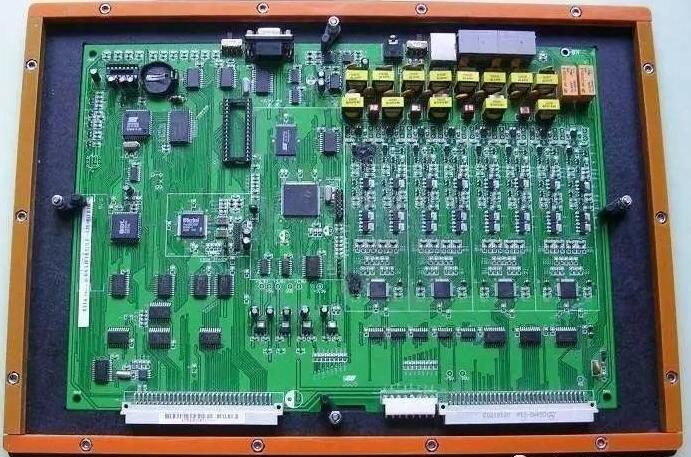Everyone knows that PCBA warping has a great impact on the production of PCBA. Warping is also one of the important problems in the production of PCBA. When PCB circuit boards are fitted with components, they bend and the foot of components is difficult to be neat. PCBA can not be mounted on the chassis or the socket inside the machine, so the PCBA warping will affect the normal operation of the whole post-sequence process.
Now PCBA has entered the era of surface mounting and chip mounting. The requirement of SMT mounting technology for PCBA warping is increasing, so we need to find out the cause of PCBA warping distortion.
1. PCB engineering design:
Notes should be taken in PCB board design:
(1) The arrangement of the semi-cured sheets between layers should be symmetrical, such as the thickness of six-layer PCB, 1-2 and 5-6 layers and the number of tensions of the semi-cured sheets should be the same, otherwise the PCB sheets will be easily warped after lamination;
(2) Multi-layer core plates and semi-cured sheets should be made from the same supplier;
(3) The graphic area of the outer A and B surfaces should be as close as possible. If the A side is large copper and the B side only has a few lines, this PCB printed board will be easily warped after etching. If the areas of the PCB lines on both sides are too different, separate grids can be added on the sparse side to balance them.
2. PCB baking board for PCBA factory before discharging:
The purpose of baking the copper clad board before cutting (150 degrees C, 8 +2 hours) is to remove water from the PCB board, and at the same time to completely cure the resin inside the PCB board, further eliminating the remaining stress in the PCB board, which is helpful to prevent the PCB board from warping.
At present, many double-sided and multilayer PCB board still adhere to the step of baking before or after cutting, but there are some exceptions from board factories. At present, the time regulations of SMT technology equipment baking boards in PCB board factories are also inconsistent, from 4-10 hours. It is recommended to decide according to the grade of PCB boards produced and the requirements of customers for warping. It is suggested that the baking board after clipping or the baking board of the inner layer should also be baked.

3. Latitude and longitude of the semi-cured sheet:
Longitudinal and latitudinal shrinkage rates of semi-cured sheets are different after lamination. It is necessary to distinguish the latitudinal and longitudinal directions when cutting and layering. Otherwise, it is easy to cause the product PCB board to warp after lamination, even if the pressure baking board is difficult to correct; Many of the reasons for the warping of Multilayer PCB are due to the overlapping of semi-cured sheets due to the lack of separation of latitude and longitude during lamination.
How do you distinguish latitude from longitude? The rolled semi-cured sheets roll up in the direction of latitude and width. For copper foil, the long side has longitude and latitude, and the short side has direction. If you are not sure, you can ask the manufacturer or supplier.
4. Stress relief after PCB lamination:
The PCB multilayer plates are removed after hot pressing and cold pressing, trimmed or milling the bristles, and then baked flat in the oven at 150 degrees Celsius for 4 hours to gradually release the stress inside the PCB plates and complete curing of the resin. This step cannot be omitted.
5. Straightening is required for PCB sheet electroplating:
Special rollers should be made when 0.4-0.6mm ultra-thin PCB multilayer plates are used for surface plating and graphic plating. After the thin plates are clamped on the flying bars on the automatic plating line, the rollers on the whole flying bars are strung together with a round bar to pull all the PCB plates on the rollers so that the plated PCB plates will not be deformed.
Without this measure, the sheet would bend and be difficult to remedy after electroplating a copper layer of 20 to 30 microns.
6. Cooling of PCB plates after hot air leveling:
Printed PCB boards are subjected to high temperature shocks from solder grooves (about 250 degrees Celsius) during hot air conditioning. After removal, they should be naturally cooled on flat marble or steel plates and cleaned in a post-processor. This is good for anti-warping of PCB boards. In some PCB factories, to enhance the brightness of the surface of lead and tin, the PCB plates are put into cold water immediately after hot air leveling and removed for post-treatment after a few seconds. This kind of hot-cold impact may warp, layered or foam some types of PCB plates. In addition, an air-floating bed can be added to the SMT technology equipment for cooling.
7. Treatment of warped PCBA board:
For well-managed PCBA manufacturers, PCBA will perform 100% evenness check during final inspection. Any PCBA that fails will be picked out and placed in the oven, baked at 150 degrees Celsius and under heavy pressure for 3-6 hours, and cooled naturally under heavy pressure. Then remove the PCBA and check its flatness. This will save part of the PCBA. Some PCBA needs to be baked two or three times to be flattened. If the above mentioned PCBA anti-warping process measures are not implemented and some PCBA baking is useless, PCBA manufacturers can only scrap the PCBA board.